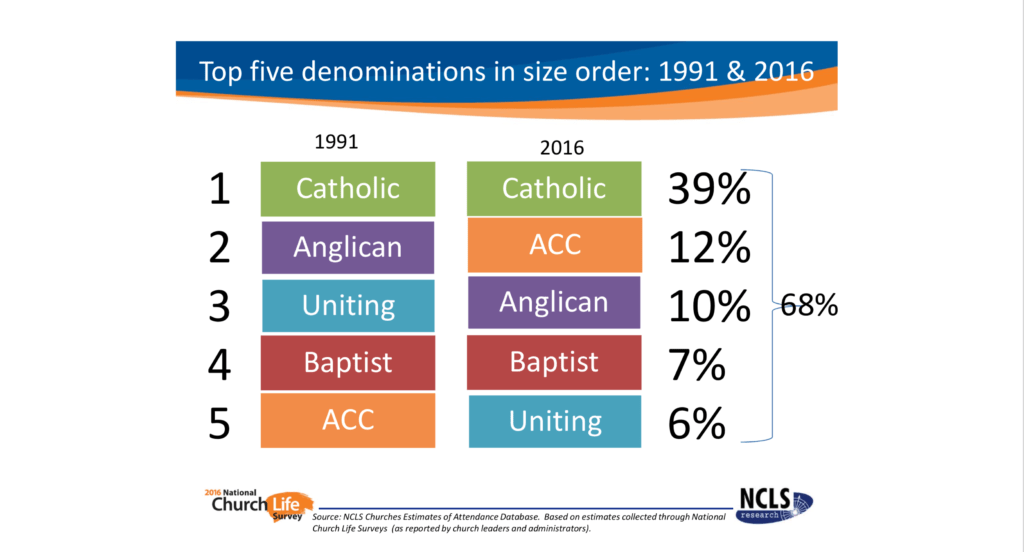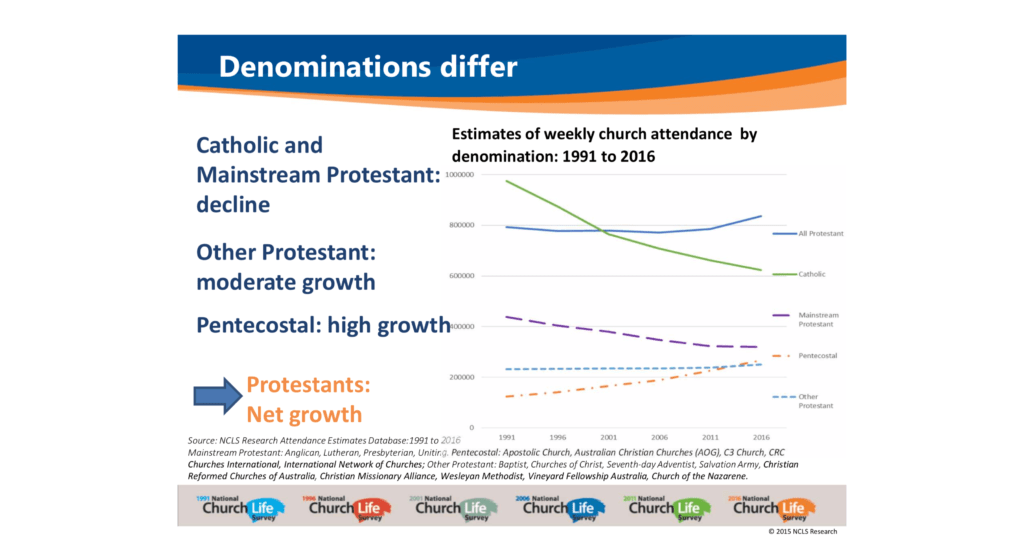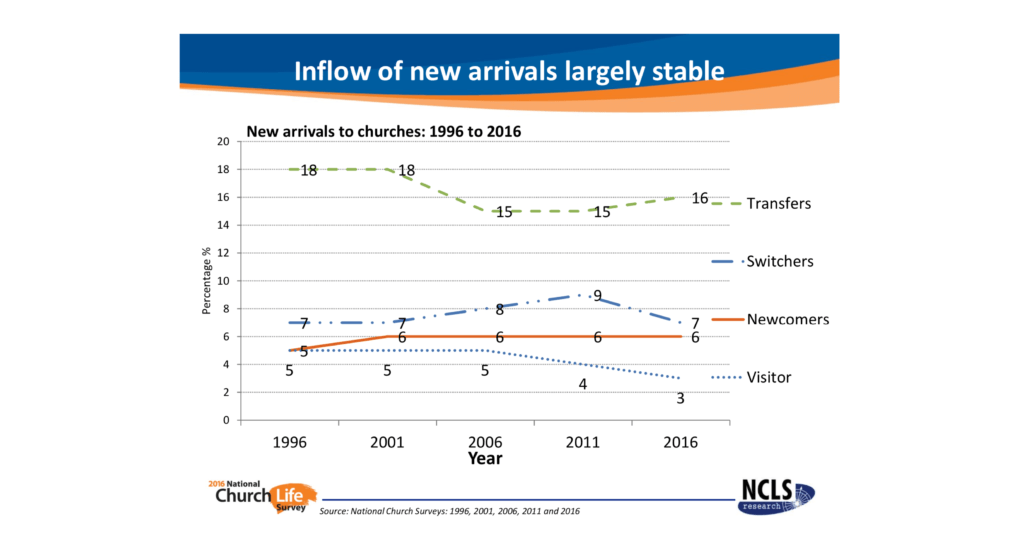Church growth: Pentecostals make all Protestants look good
ACC changes the Aussie landscape
The makeup of the church in Australia is changing as a result of “incredibly high growth” in Pentecostal churches, according to the Director of NCLS Research, Ruth Powell.
In the most recent National Church Life Survey, conducted in 2016, the Australian Christian Churches (ACC) shot up to the second largest single denomination after the Catholic Church.
It was a dramatic leap from the fifth position that ACC – then known as Assemblies of God – occupied in 1991, when the first such survey of Australian churches took place. The NCLS is the largest, longest running survey of local church life in the world. The 2016 NCLS was the sixth survey with responses from 250,000 people in 3000 churches.
“ACC is the second largest single denomination in Australia at the moment, followed by Anglican, followed by Baptist, followed by Uniting.” – Ruth Powell
“The size order of the top five denominations in Australia has changed over the past 25 years,” Powell told an Australian Community and Church Summit in Sydney on Friday, November 22.
“In 1991, if you counted the number of people who go to church, you have Catholic, Anglican, Uniting, Baptist, ACC. So ACC was fifth. Roll forward to 2016 when we did the last estimate, after Catholic, ACC is the second largest single denomination in Australia at the moment, followed by Anglican, followed by Baptist, followed by Uniting.”
 Powell said the shape of the Australian church had changed in a relatively short time thanks to the incredibly high growth of the Pentecostal movement, of which ACC represents half.
Powell said the shape of the Australian church had changed in a relatively short time thanks to the incredibly high growth of the Pentecostal movement, of which ACC represents half.
Powell said the top five denominations accounted for 68 per cent all church attenders.
She was asked what the impact might be of Hillsong Church’s decision to break from the ACC and form its own independent denomination.
“We will see what happens, but I’m not expecting that picture to change dramatically even though Hillsong is taken out of those ACC figures. ACC will not drop back to number five, for example. Hillsong will then be one of the largest of the smaller denominations.”
The changing face of the church was one of six features of the Australian landscape that Powell presented to the conference, gleaned from the organisation’s 25 years of research into the Australian church.
“We told the story in the last decade that church attendance has declined … Change that narrative today. Church attendance has plateaued.” – Ruth Powell
One positive finding from multiple sources of estimates was that church attendance has begun to plateau after many years of decline.
According to monthly attendance data, the rate of decline in self-reported church attendance from 1950 to 2019 has slowed.
And, according to head counts carefully collected within churches, the decline in weekly attendance has now plateaued.
“So we told the story in the last decade that church attendance has declined and you will have understood the narrative. Change that narrative today. Church attendance has plateaued. That’s where we’re sitting at the moment,” Powell said.
 Another encouraging finding was that Protestant churches are growing overall.
Another encouraging finding was that Protestant churches are growing overall.
“It’s the first time I’ve been able to say that in 30 years of working. We have growing churches overall. Yes, when we look at the Catholic Church, which is the largest church-attending group in Australia, and mainstream Protestant churches, which include Anglican, Uniting, Lutheran, Presbyterian, you see that decline trend and that relates to an ageing profile as well. That continues over the last 25 years,” Powell said.
However, another subgroup “other Protestant churches” – including Salvation Army, Adventist, Church of Christ – show moderate growth over 25 years.
“Over the 25 period since 1991, the Pentecostal churches, when considered together, have doubled in size … Now when you put that story together, the net effect is a story of growth when you combine all Protestant churches together,” said Powell.
“The story is that the inflow into churches is stable. People are still trying churches.” – Ruth Powell
One possibly unexpected finding was that the inflow of new arrivals has been largely stable. This holds true for people who change churches within the same denomination – known as transfers – and those who change denominations – known as switchers – as well as newcomers – people who were not in church in the previous five years, which is the area of greatest interest.
“Let’s dig a little deeper into that newcomer figure – we do see some erosion. There’s a story there to be aware of, it is getting tougher, but I still want to give a basic message at a high level: the story is that the inflow into churches is stable. People are still trying churches is my top message for you today,” Powell said.
 Another positive finding was that local church leaders see themselves as effective in their roles. “You get ‘I’m really stressed, but I’m really satisfied in my ministry.’”
Another positive finding was that local church leaders see themselves as effective in their roles. “You get ‘I’m really stressed, but I’m really satisfied in my ministry.’”
Finally, church attenders are more likely to be positive about their church experience than they were 25 years ago, with higher ratings given for all surveyed indicators of church vitality.
“Whether they’re inspired in worship, in service, their engagement, they’re looking for opportunities to engage beyond themselves, commitment to the vision – in all of those, there are higher proportions of church attenders in church today who are positive about those aspects of church life than 25 years ago.”


